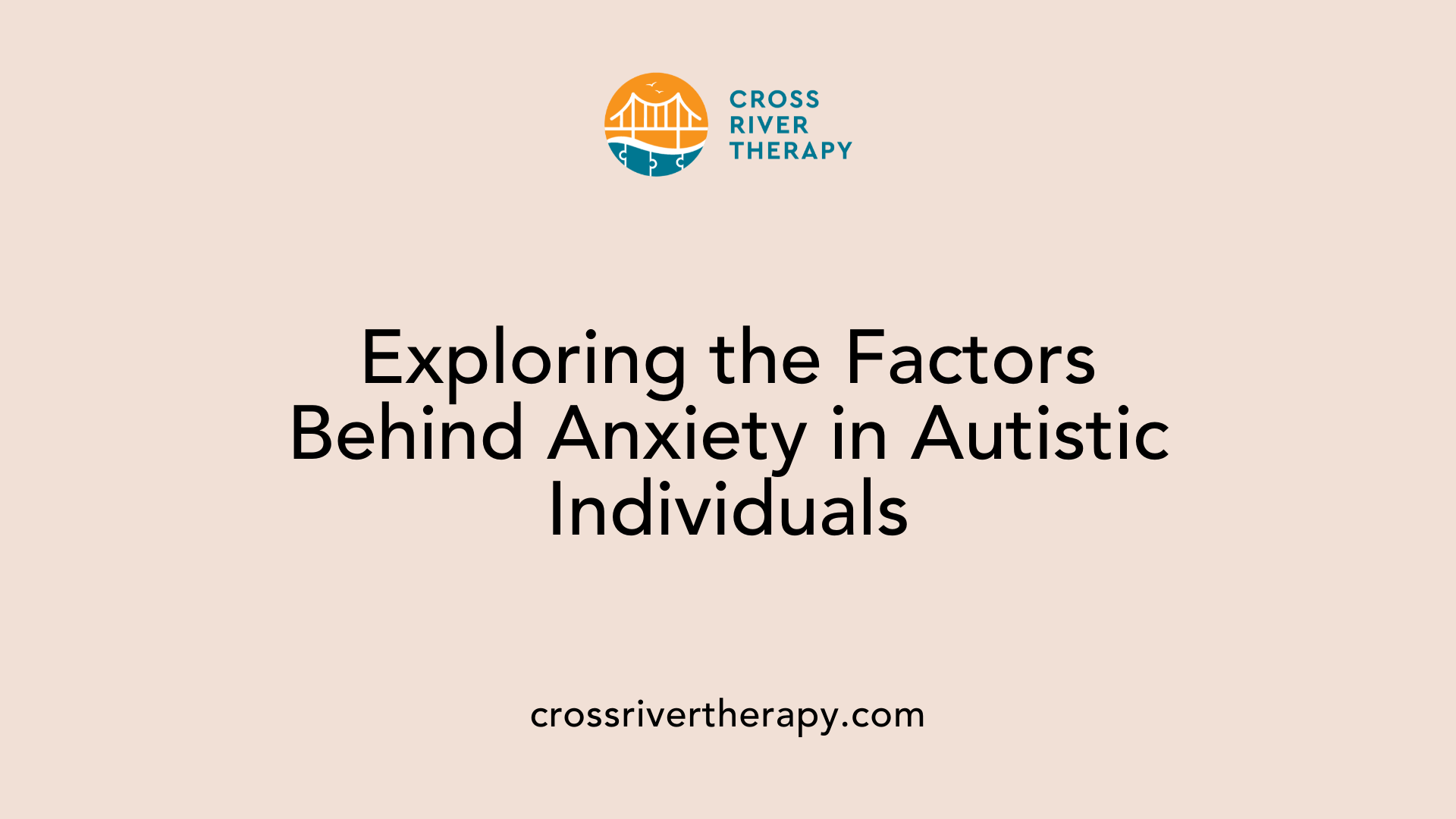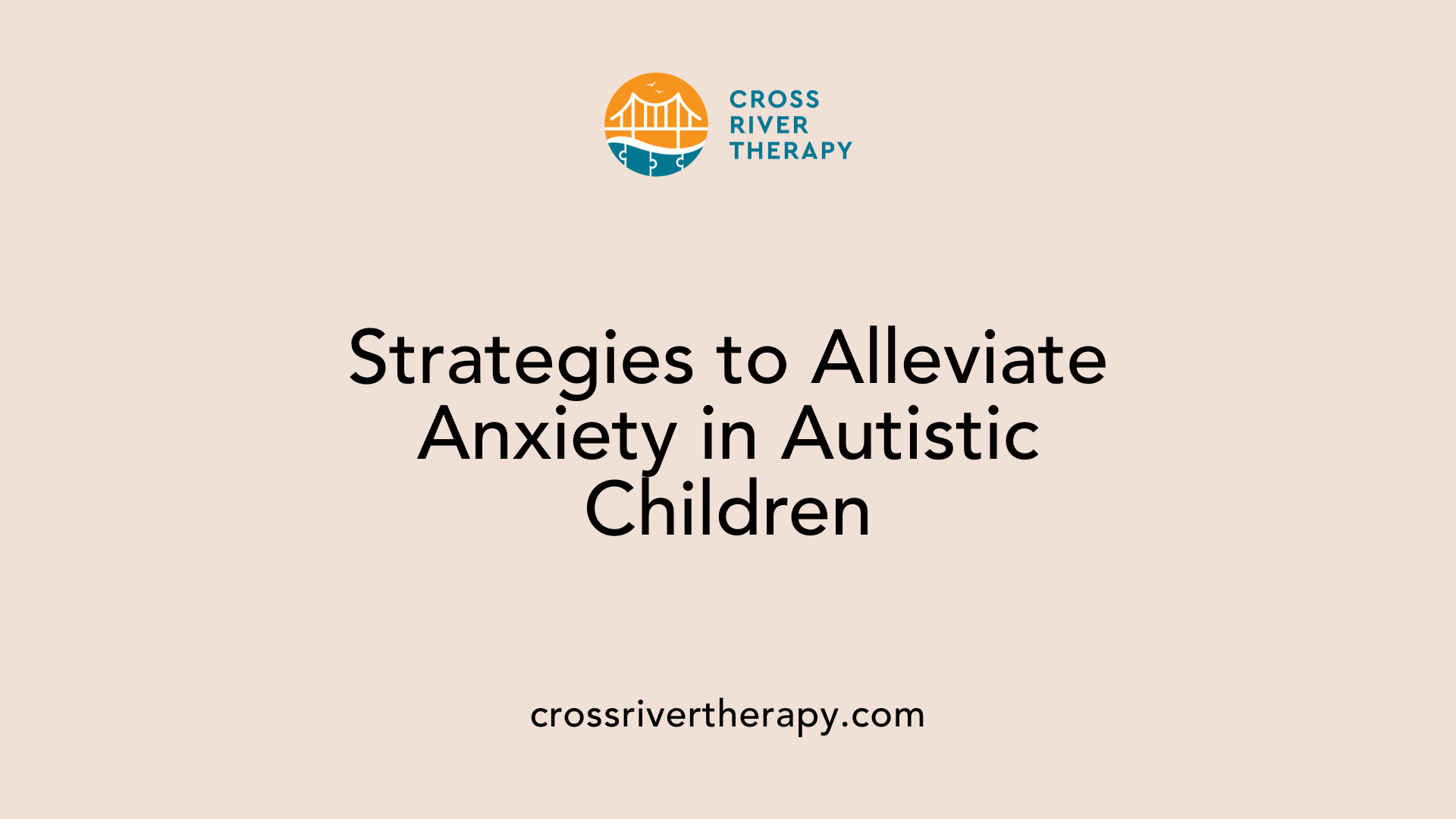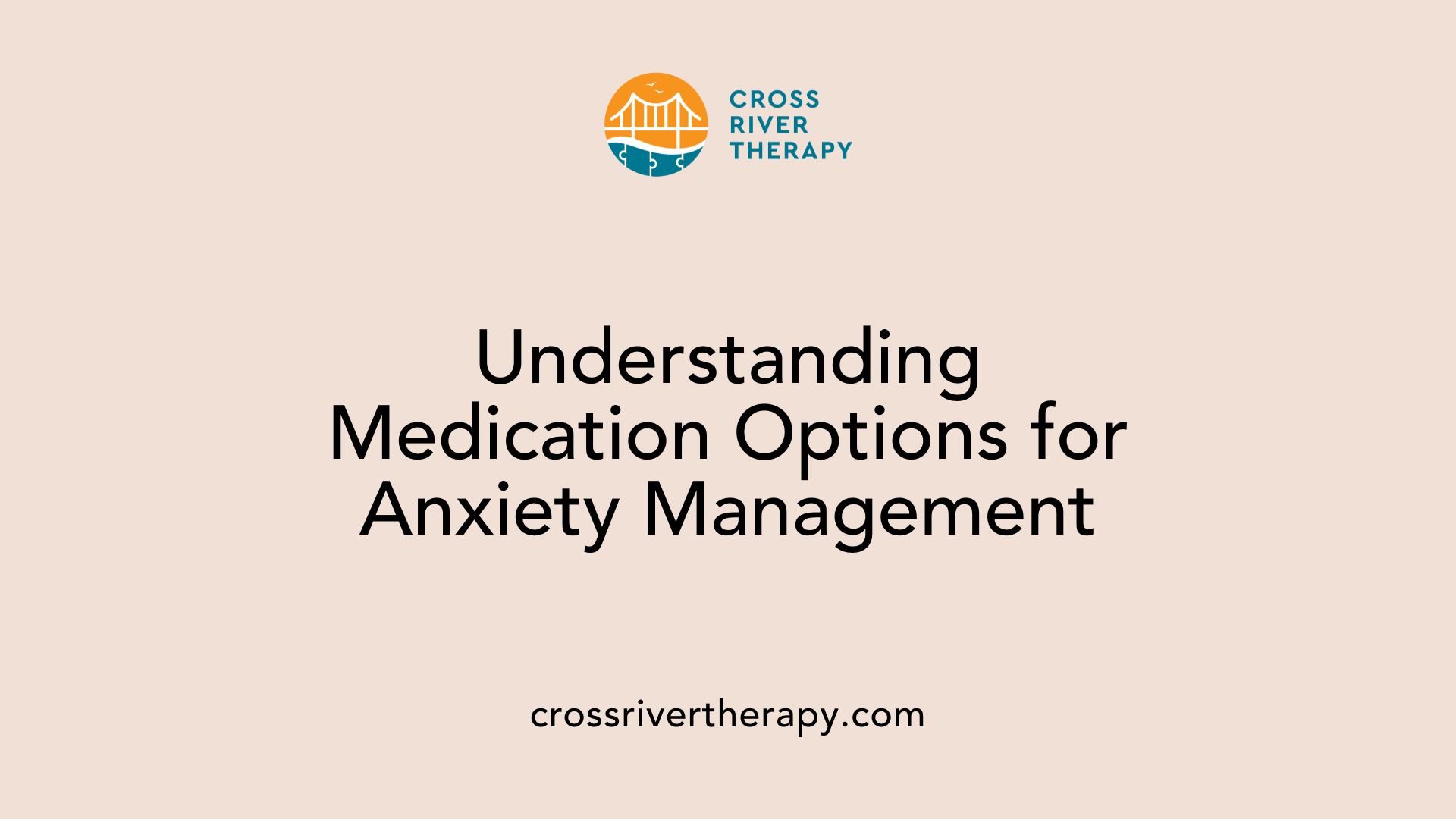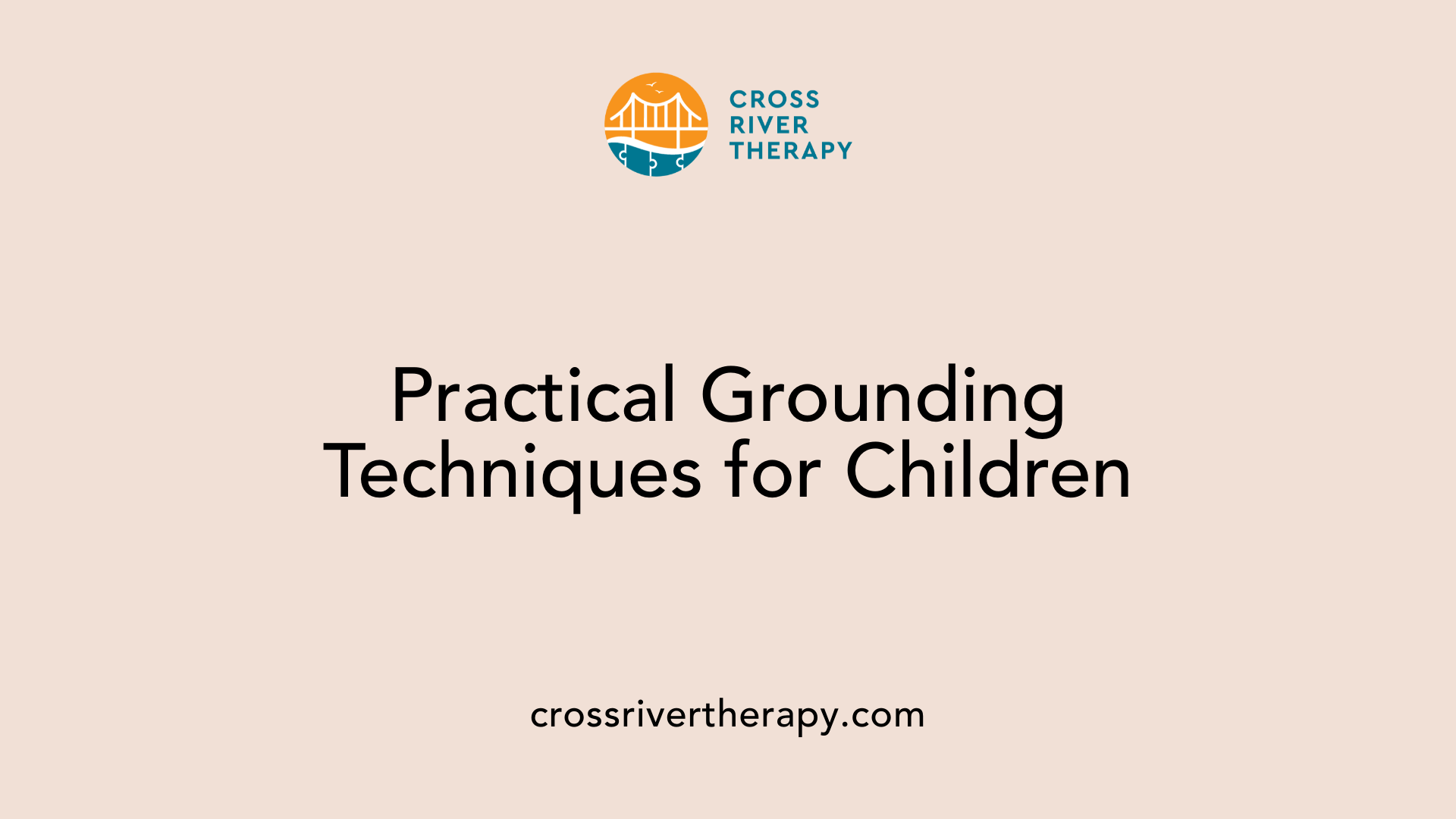Reducing Anxiety in Autism Care
Effective Strategies for Managing Anxiety in Autism
Understanding Anxiety in Autism
Anxiety is a prevalent and often debilitating condition that significantly affects individuals with autism, intensifying challenges related to communication, social interactions, and daily functioning. According to research, anxiety disorders are remarkably common in autistic individuals, with nearly half of autistic adults and 40% of children experiencing significant levels of anxiety. It is crucial for caregivers and clinicians to understand both the causes and effective management strategies to alleviate the impact of anxiety in autism care.
Causes of Anxiety in Autistic Individuals

What causes anxiety in autistic individuals?
Anxiety in autistic individuals is influenced by several interconnected factors. Sensory sensitivities play a significant role. Many autistic people experience heightened awareness to sensory stimuli, such as loud noises or bright lights, which can lead to overwhelming feelings and increased anxiety.
Communication challenges also contribute to anxiety, as many autistic individuals struggle to express their feelings or needs. This inability can foster a sense of isolation and frustration, amplifying anxious reactions. Additionally, intolerance to uncertainty can create distress; unpredictable environments or changes in routine often become significant triggers.
Routine disruptions are particularly challenging for many children with autism. Changes to familiar settings or schedules can evoke feelings of insecurity, leading to anxiety. Often, these individuals may exhibit physical symptoms of anxiety such as a racing heart, stomachaches, or heightened irritability, which complicates recognizing their emotional state.
To manage these challenges, therapeutic support options are available. Cognitive Behavioral Therapy (CBT) is recommended as an effective treatment because it helps individuals identify their fears and develop coping strategies. Mindfulness-based practices can also offer calming techniques that reduce anxiety by promoting emotional regulation. Understanding the unique experiences and needs of autistic individuals is crucial in creating tailored strategies to address anxiety effectively.
| Factors | Implications | Support Options |
|---|---|---|
| Sensory sensitivities | Overwhelm from stimuli | Cognitive Behavioral Therapy |
| Communication challenges | Difficulty expressing needs | Mindfulness practices |
| Intolerance to uncertainty | Increased distress with change | Tailored therapeutic support |
| Routine disruptions | Heightened anxiety in unfamiliarity | Coping strategy development |
Therapeutic Techniques for Reducing Anxiety in Children with Autism

How can anxiety in children with autism be reduced?
Anxiety in children with autism can be mitigated through various tailored strategies that address their specific needs. Properly distinguishing between tantrums and meltdowns is essential; meltdowns are often linked to sensory overload and require targeted interventions focused on sensory regulation.
Visual Schedules
Using visual schedules is a highly effective method for helping autistic children manage transitions and anticipate changes throughout the day. These schedules provide clear, visual cues that outline what to expect, reducing anxiety caused by unpredictability.
Sensory Regulation
Incorporating sensory diets can help regulate sensory input and ensure children receive appropriate stimulation. Activities like swinging, deep pressure techniques, or the use of weighted blankets can promote a calming effect, alleviating feelings of anxiety.
Safe Sensory Spaces
Creating designated safe sensory spaces is important. These areas can be equipped with soothing tools such as noise-canceling headphones, fidget toys, and soft lighting to provide sensory relief and comfort during overwhelming experiences.
Therapeutic Activities
Engaging in therapeutic activities, including exercises that involve physical movement and creative play, has shown to enhance emotional regulation and support brain development. Such activities not only serve as a distraction but also facilitate social interaction in a safe environment.
By integrating these approaches, caregivers can effectively support children with autism in managing their anxiety, fostering a sense of security and promoting overall well-being.
Pharmacological Interventions for Anxiety in Autism

What anxiety medications are used for individuals with autism?
Anxiety is a common concern among individuals with autism spectrum disorder (ASD). Research indicates that anxiety prevalence in this group can range from 11% to an alarming 84%, which far exceeds typical rates found in the general population. Although there are no medications specifically approved by the FDA for treating anxiety in autistic individuals, selective serotonin reuptake inhibitors (SSRIs) are often prescribed. Medications like Prozac have shown potential benefits in alleviating anxiety symptoms, allowing for better emotional regulation.
Behavioral interventions
Alongside pharmacological options, behavioral interventions play a crucial role in managing anxiety. Cognitive-behavioral therapy (CBT) has demonstrated effectiveness in both children and adults with autism. CBT helps individuals identify their anxiety triggers, challenge irrational thoughts, and develop coping strategies. Additionally, techniques such as exposure therapy can facilitate gradual exposure to feared situations, thereby reducing anxiety over time.
Tailored medical interventions
It is essential for healthcare professionals to take a tailored approach when considering medications for anxiety in autistic individuals. Each person with autism may respond differently to such treatments due to the complex interplay of their unique neurology and environmental factors. A careful assessment and ongoing monitoring are vital to ensure that the chosen interventions are beneficial and safe.
Challenges in medication efficacy
Despite the potential benefits of SSRIs, challenges regarding medication efficacy persist. Some studies show mixed results regarding their overall effectiveness, suggesting that responses can vary significantly among individuals with autism. Close monitoring is necessary for managing potential side effects and ensuring the treatment aligns with the person’s specific needs. This approach encourages healthcare providers to utilize a combination of therapy and medication, customized for the best outcomes.
Grounding Techniques: The 3-3-3 Rule

What is the 3-3-3 rule for anxiety in children?
The 3-3-3 rule is a practical grounding technique aimed at helping children manage overwhelming feelings associated with anxiety. This method is structured to assist children in refocusing their thoughts and emotions when they feel anxious or stressed. Specifically, the child is instructed to:
Identify three things they can see.
Encourages visual engagement with their environment, helping to divert attention from anxiety triggers.Identify three things they can hear.
Promotes auditory awareness, facilitating a connection with the present moment.Move three different parts of their body.
Involves physical movement which can help to ground them and release built-up tension.
This technique is particularly beneficial for younger children who may find it challenging to articulate their feelings.
Managing overwhelming feelings
The act of focusing on tangible aspects of their surroundings can serve as a distraction from anxious thoughts. By engaging with the environment in this way, children may find it easier to calm themselves and reduce the intensity of their anxiety symptoms.
Reducing anxiety symptoms
Combining the 3-3-3 rule with other techniques—such as mindfulness exercises, expressive arts, and parental guidance—further enhances its effectiveness. Encouraging openness and fostering supportive environments at home are crucial to reinforcing this grounding technique and promoting overall mental well-being.
Managing Anxiety in Autistic Adults Compared to Children
How can anxiety be managed in autistic adults compared to children?
Managing anxiety in autistic adults necessitates customized strategies that recognize their developmental stage and life experiences. Both children and adults benefit from sensory-friendly environments, but adults often have more ability to engage in self-directed coping mechanisms.
Adult-specific techniques
Autistic adults can use mindfulness practices, which have shown effectiveness in reducing anxiety levels. Personalized routines and cognitive-behavioral therapy (CBT) also play a crucial role in helping them manage stress. These techniques promote a sense of control, enhancing everyday functioning.
Stressors unique to adults
Adult stressors differ significantly from those experienced by children. Autistic adults may face challenges in work-life balance, romantic relationships, and meeting societal expectations. Addressing these specific stressors is crucial, as they can intensify feelings of anxiety.
Involvement in treatment planning
Involvement in their own treatment planning empowers autistic adults by allowing them to voice their preferences and goals. This not only fosters autonomy but also can lead to better outcomes, as they are more likely to adhere to strategies they helped design.
Access to medication management
Medication management can be more complex for autistic adults than children. While options like SSRIs are available, the appropriateness and monitoring of such treatments require careful consideration. Adults should have comprehensive discussions with healthcare providers about the risks and benefits of medication to determine the most suitable approach for managing their anxiety.
In summary, recognizing the distinct needs of autistic adults, involving them in their care, and addressing unique stress factors will greatly enhance anxiety management efforts.
The Role of Cognitive Behavioral Therapy (CBT) in Autism Care

CBT Modifications for Autism
Cognitive Behavioral Therapy (CBT) is a widely recognized approach for managing anxiety, particularly among children and individuals on the autism spectrum. Its structure is particularly beneficial when adapted for autistic individuals, taking into consideration their unique communication styles and social challenges. Modified CBT (MCBT) emphasizes psychoeducation and empowers individuals to understand their feelings better. This approach can include visual supports and practice scenarios, enhancing comprehension and practical application of coping techniques.
Effectiveness of CBT
Research supports the effectiveness of CBT in reducing anxiety symptoms in autistic children and adolescents. Randomized clinical trials indicate significant reductions in anxiety levels, further improving psychosocial functioning. Specifically tailored CBT demonstrates its ability to help youths identify and challenge anxious thoughts, ultimately fostering independence and personal confidence. These therapeutic gains contribute positively across various aspects of life, from social interactions to daily living skills.
Exposure Therapy Integration
In conjunction with CBT, exposure therapy serves as a valuable technique to help children face their fears gradually. By integrating exposure strategies within the CBT framework, children learn to confront anxiety-provoking situations in a controlled and supportive environment. This gradual exposure helps desensitize them, reducing anxiety over time and enhancing their ability to cope with new or challenging experiences. This combination of therapies not only alleviates anxiety but also enriches the overall therapeutic process for autistic individuals.
Sensory Tools and Environments
Creating sensory-friendly environments
Establishing environments that accommodate sensory preferences is crucial for managing anxiety in children with autism. This may involve adjusting lighting, minimizing noise, or allowing for flexible seating options to reduce distractions and create a more comfortable space.
Identifying sensory triggers
Recognizing specific sensory triggers is essential. Common triggers for anxiety can include loud noises, crowded spaces, or unpredictable changes in routine. Awareness of these triggers helps caregivers implement proactive strategies to mitigate potential anxiety.
Tools for managing sensory input
A variety of tools can be effective in managing sensory input. Here are some examples:
| Tool | Purpose | Example Use Case |
|---|---|---|
| Weighted blankets | Provides calming pressure | Helps during bedtime |
| Noise-canceling headphones | Reduces auditory distractions | Useful in crowded environments |
| Fidget toys | Keeps hands busy and reduces anxiety | Helps during stressful situations |
| Sensory toolboxes | Customizable kits with various calming items | Offers variety for different needs |
These sensory tools empower children to self-regulate and can significantly reduce anxiety levels.
The Importance of Recognizing Anxiety Triggers
Identifying Triggers
Recognizing anxiety triggers in children with autism is crucial for effective management. Common triggers include changes in routines, sensory sensitivities, and unfamiliar social situations. Autistic children may struggle to articulate their feelings, so careful observation of anxious behaviors—like increased heart rate, sweating, or withdrawal—can provide vital insights. Parents and caregivers should educate themselves on how these symptoms may overlap with autism traits, making it easier to distinguish between typical behaviors and anxiety manifestations.
Proactive Management Strategies
Once triggers are identified, proactive strategies can be employed to manage potential anxiety. Creating a sensory toolbox equipped with items like fidget toys, noise-canceling headphones, and weighted blankets can help reduce overstimulation. Additionally, visual supports such as photo schedules can prepare children for routine changes or unfamiliar events. Techniques like mindfulness and deep breathing should be taught to aid in the immediate alleviation of anxiety symptoms.
Parental Involvement
Parental involvement plays a vital role in managing anxiety. Engaging parents in workshops focused on anxiety management can significantly empower them. Studies indicate that when parents learn how to recognize anxiety triggers and respond effectively, children exhibit fewer anxiety-related behaviors and improved social skills. This collaborative approach fosters a supportive environment where the child feels understood and secure, ultimately enhancing their overall well-being.
Empowering Caregivers and Individuals
Effectively reducing anxiety in autism care requires a multifaceted approach that includes therapies, environmental adjustments, and tailored strategies for both children and adults. Cognitive Behavioral Therapy, when adapted appropriately, remains a cornerstone for managing anxiety, while mindfulness and sensory-based interventions provide additional support. Caregivers play a critical role in this process by recognizing anxiety triggers and implementing practical techniques that foster emotional well-being. Continued research and personalized care strategies are essential to address the unique challenges faced by autistic individuals, ultimately empowering them to lead more fulfilling lives.
References
- Managing anxiety in children with autism
- 20 Tips for Managing Anxiety for Autistic Individuals
- What Anxiety Treatments Work for People With Autism?
- Helping Autistic People to Manage Anxiety - Autism - Verywell Health
- Anxiety in autistic children & teenagers | Raising Children Network
- Treatment of comorbid anxiety and autism spectrum disorders - PMC
- Autism and anxiety in adults
- Strategies for Managing Anxiety in Children With Autism
- Stress & Anxiety Reduction - Autism Research Institute
- Anxiety and Autism: All You Should Know



